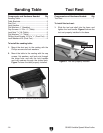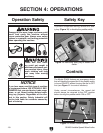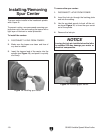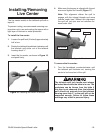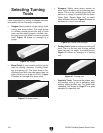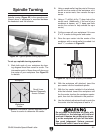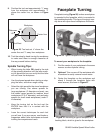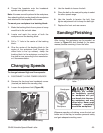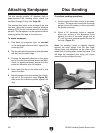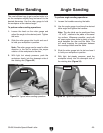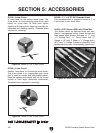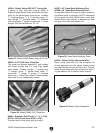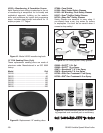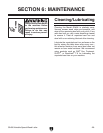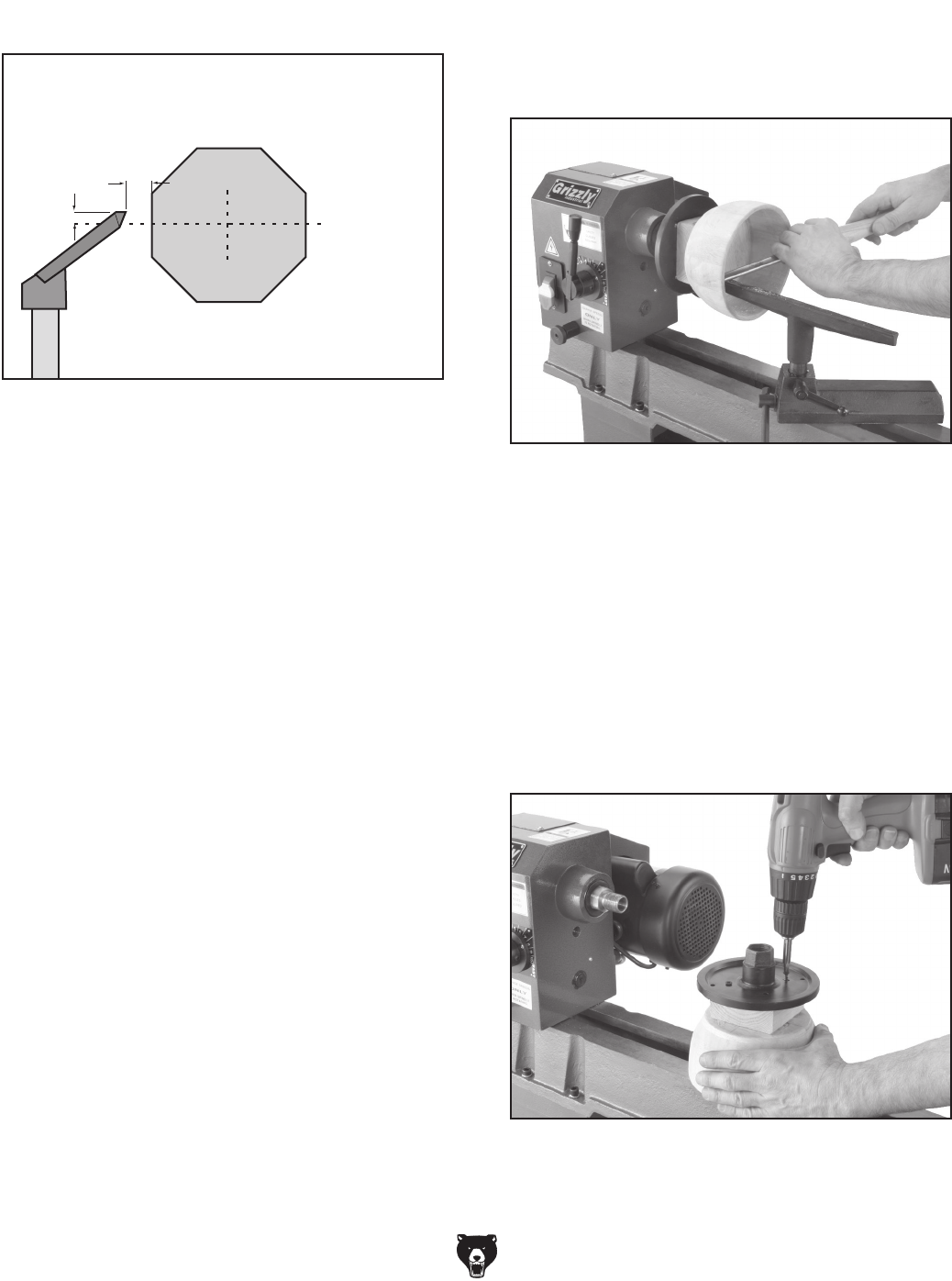
-22-
G0456 Variable Speed Wood Lathe
9. Position the tool rest approximately
1
⁄4" away
from the workpiece and approximately
1
⁄8"
above the center line, as shown in
Figure
25.
10. Test the setup by hand-turning the workpiece
to make sure there is enough clearance all
the way around before starting.
Spindle Turning Tips:
• When turning the lathe ON, stand to the side
of the spinning direction until the lathe reach
-
es full speed and you can verify that the lathe
will not throw the workpiece.
• Use the slowest speed when starting or stop
-
ping the lathe, and when rough cutting.
• Select the right speed for the size of workpiece
you are turning. Use slower speeds for
large workpieces (4" diameter and over); use
the middle range speeds for medium sized
workpieces (2" to 4" diameter); and use faster
speeds for small sized workpieces (under 2"
in diameter).
• Keep the turning tool on the tool rest the
ENTIRE time that it is in contact with the
workpiece.
• Learn the correct techniques for each tool
you will use. If you are unsure, read books or
magazines about lathe techniques and seek
training from experienced users.
Figure 25. Tool rest set
1
⁄8" above the
center line and
1
⁄4" away from workpiece.
Figure 27. Mounting a typical faceplate to a
backing block, which is glued to the workpiece.
Figure 26. Typical faceplate turning operation.
Faceplate turning (Figure 26) is when a workpiece
is mounted to the faceplate, which is mounted to
the headstock spindle. This type of turning is usu
-
ally done with open-faced workpieces like bowls.
Faceplate Turning
To mount your workpiece to the faceplate:
1. Find the center of your workpiece in the same
manner as when spindle turning.
2. Optional: Trim corners off the workpiece with
a bandsaw to easily remove known waste.
3. Center the faceplate on the workpiece and
attach it through the faceplate holes with
wood screws, as shown in
Figure 27.



